
Members of Nihon BioData Corporation (hereinafter referred to as NBD) creates a strikingly unique atmosphere in the Chitose Group Office. I often hear their voices engaging in vigorous debate in the office, and they use a lot of loanwords and technical jargons so what they say usually sounds greek to me.
In short, NBD is a “bioinformatics” company. NBD has been a mysterious organization for me since I have never deeply thought about what we can do with “bioinformatics”. I think that even among Chitose’s members, only a few can tell you what exactly NBD is doing.
Thus, in this article, I will dig deep into NBD and the current situation surrounding bioinformatics.
Note: In this article, you will see the expression “wet” and “dry”. Theory and computer analysis are expressed as “dry” research, while biological experiments as “wet” research.
History of the birth of NBD
Ogata has been working as a “wet” researcher at Tokyo University of Agriculture and Technology. While continuing his research for the doctoral thesis, he came across the need to analyze a large amount of data obtained by a Next Generation Sequencer (hereinafter referred to as NGS*).
*Next Generation Sequencer (NGS): A device that determines the accurate order of nucleotides along chromosomes and genomes at high speed
After he spoke to many people who make a living as a bioinformatician, he became keenly aware that there is no one in Japan who can analyze biological big data.
As from what he has learnt, through self-education he has acquired knowledge of statistics, programming and information science, and started providing analysis services as a student venture since 2012. In addition, he obtained his doctorate in a research of biological big data analysis using NGS for the first time in Japan.
In 2013, he established “Nihon BioData Corporation”, and became a part of Chitose Group the same year.
Bioinformatician that understands living organisms
All NBD members have a similar background, where they found a necessity to analyze information and acquired knowledge about bioinformatics through self-education while doing “wet” research. All members are experienced with publishing papers, filing a patent application for their own research associated with biological big data analysis, and capable of grasping the overall picture of research that needs data analysis. These may be the biggest reasons that distinguish NBD from other bioinformatics company.
Bioinformatics is not just about looking at “data”. It is about visualizing and objectifying the data, which is, the nature of living organisms behind the enumeration of letters. That is, looking into the “living organisms” itself.
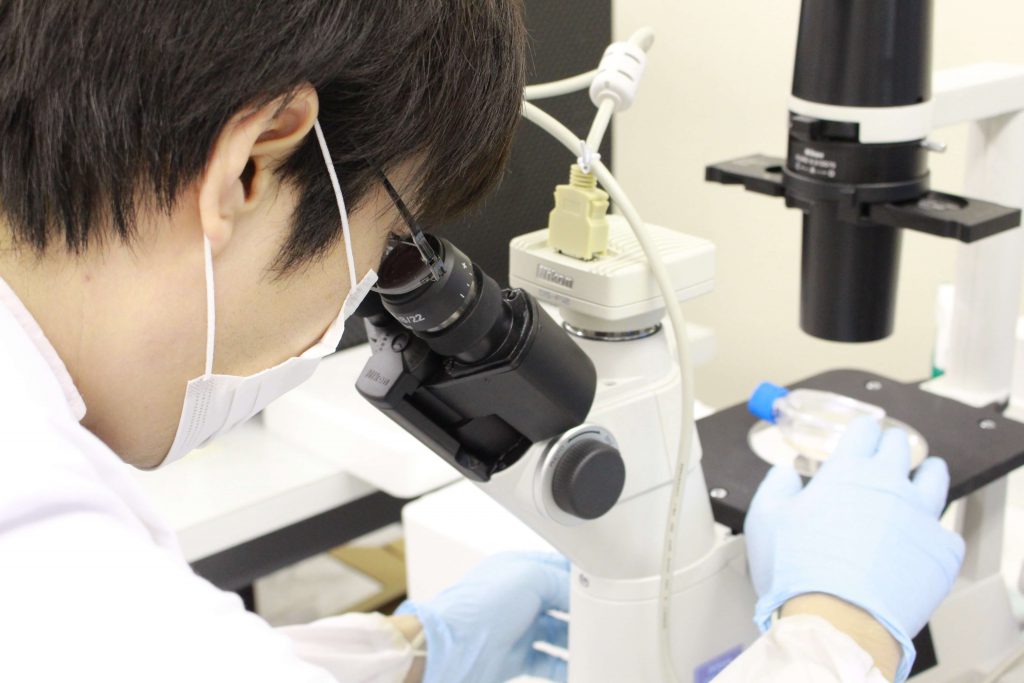
Individuals who have mastered the true “bioinformatics”, which is a combination of two studies: “biology” and “information science”, can only grow in the environment where researchers feel the necessity of information analysis and acquired the techniques through self-education like the NBD members.
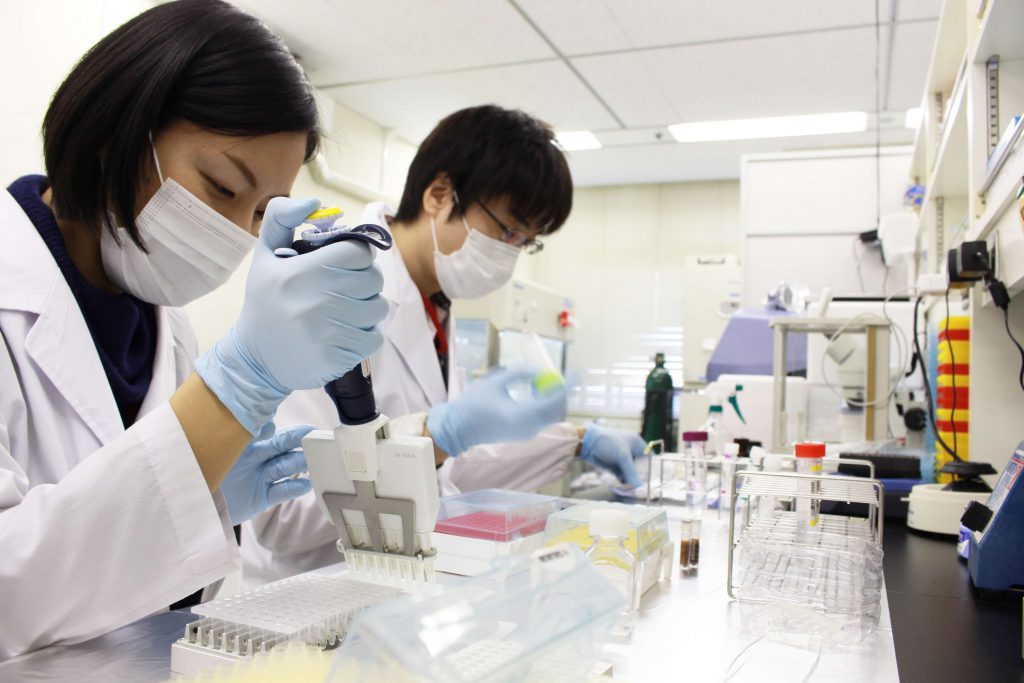
Indeed, the number of people who systematically learned bioinformatics still seems to be small in the market, which is almost the same situation as 5 years ago, when NBD members including Ogata were students.
Since Ogata felt a sense of danger in delegating data analysis to “dry” researchers, since it would mean giving up the viewpoint of interpretation, in 2011 he wrote a free digital book “Next Generation Sequence Data Analysis that you can try at Home with a MacBook “, in the hope of a future where more “wet” researchers will start analyzing NGS data.
http://nbiodata.com/contents/ouchi/
Last year, NBD provided an on-site bioinformatics training seminar for beginners, which was hosted by JOHOKIKO Co., Ltd.. I heard that the seminar received many positive feedback from participants since they could learn bioinformatics in a practical manner.
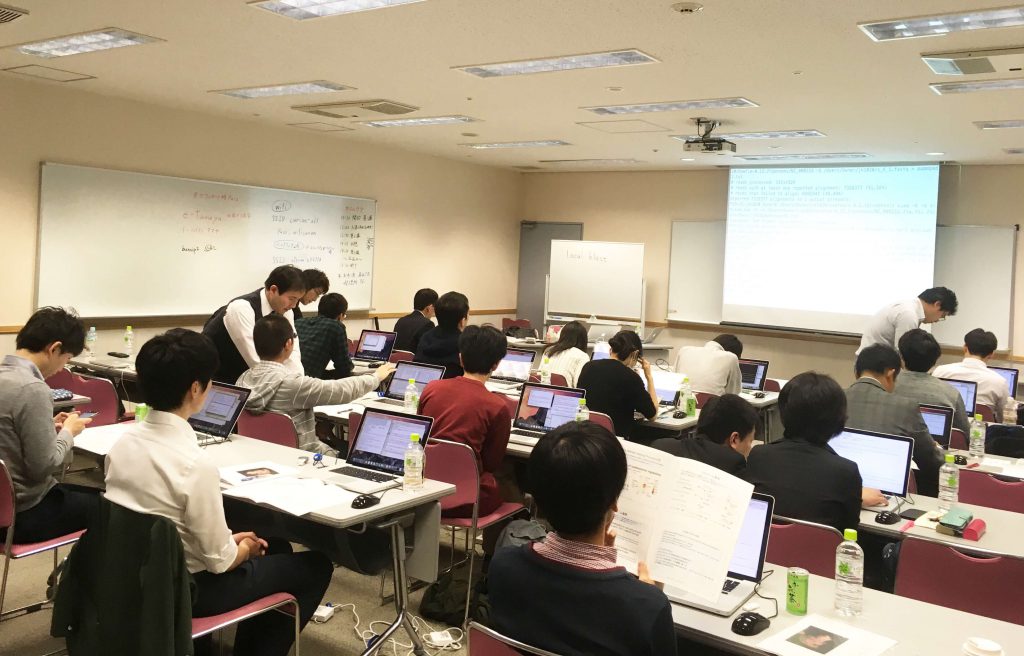
Unfortunate reality surrounding biological big data analysis
Needless to say, researches have a “purpose” in research, and to achieve the ‘purpose’, what kind of “means” should be taken must be considered. Biological big data analysis is also a “means” to achieve “purpose”, however, it is common to see cases where biological big data analysis is carried out without considering any “purpose”.
One of the reasons is that research support for biological big data analysis has increased, since NGS began to spread rapidly in Japan from around 2010. Biological big data analysis became a “purpose” rather than a “means” when researchers could obtain money and it started to seem like cool thing to do.
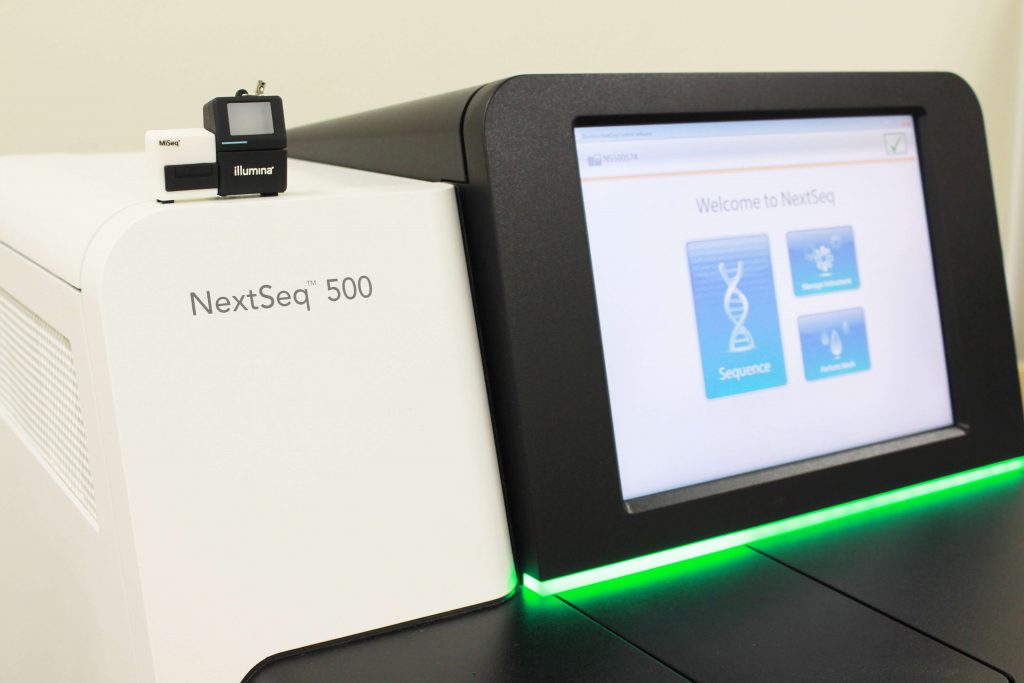
However, it is not possible to obtain any useful information when you practice data analysis without considering the purpose of what you want to know. In “bioinformatics”, experimental design according to the purpose must be considered first. If the pieces are not perfect, the puzzle will never be completed. In order to understand what the picture of the puzzle means, knowledge of biology is necessary. Such way of thinking is more like common sense for NBD people, but it does not seem to apply to the people in the world yet.
There is still a lack of researchers that are capable of handling biological big data in biological laboratories. Therefore, many researchers outsource their whole big data analysis by using their research budget. And what they will get is finding themselves in a maze made from a pile of results with no biological interpretation. Dr. Sydney Brenner, a South African biologist who won a 2002 Nobel prize in Physiology and Medicine Laureate, ridiculed such a situation as “low-input, high-throughput, no-output biology”.

Photo by EMLederberg GStent SBrenner JLederberg 1965 wiki/CC by 3.0
What can NBD do?
“Find out the meaning of data from a biologist’s viewpoint.”
This is “bioinformatics” defined by NBD.
Analyzing technology makes it possible to describe complicated phenomena that cannot be recognized by direct observation of living organisms, and captures the nature of data by expanding the receptor. To do so, using only “data” provided by clients is not sufficient. If you do not understand the whole picture of the research including data analysis, you cannot even judge whether the data is a complete puzzle piece , nor can you complete the puzzle nor interpret the picture that could be seen from it.
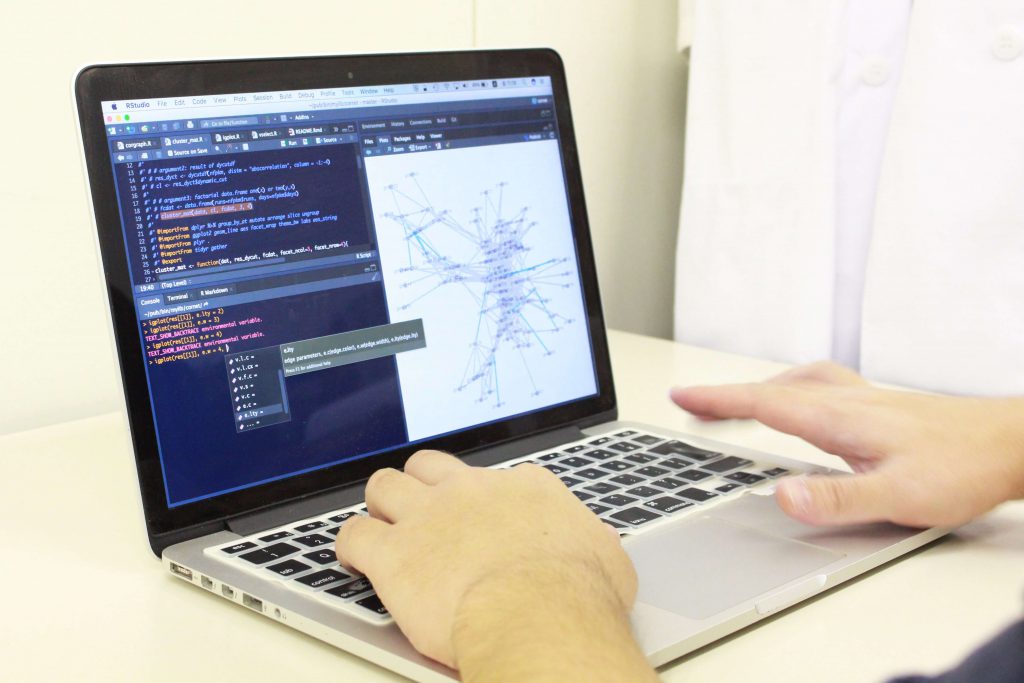
Other major bioinformatics companies usually refuse orders in irregular form. On the other hand, NBD have never had such a regular form. NBD fully customizes methods for analysis every time depending on the client and their purpose. If they do not have a way of expressing, they create their own. Since then, they have received so many inquiries which were rejected by other bioinformatics companies.
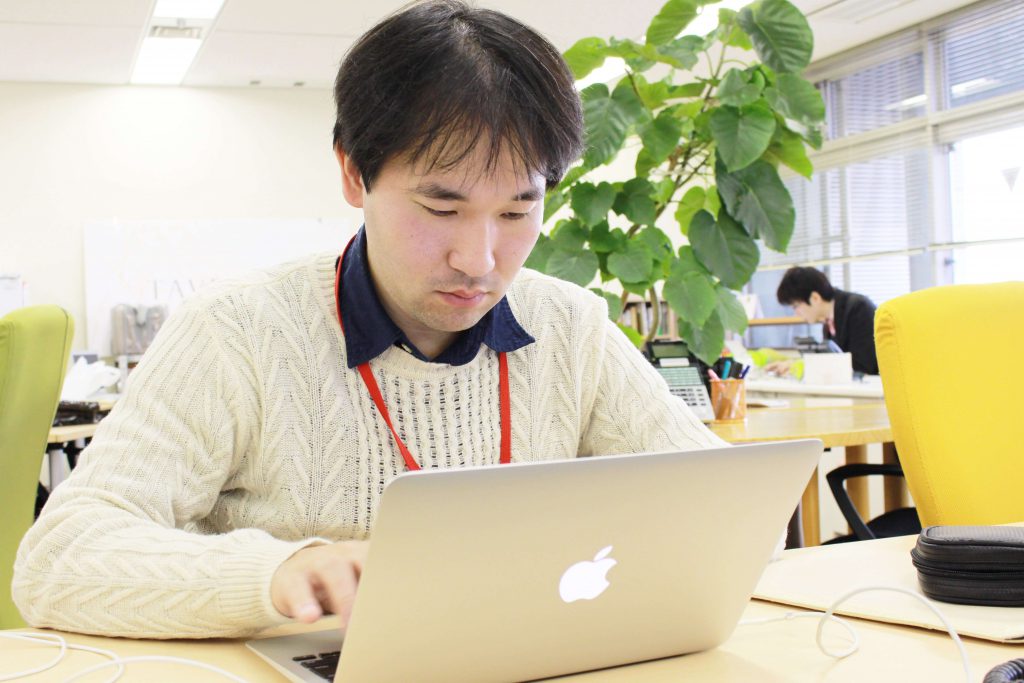
Sense the nature of living organisms
To write this article, I talked a lot with the NBD members. I heard many complicated ideas, and sometimes my head was filled with many questions. But I noticed one simple thing through the conversation with them. They have one very pure and absolute motivation: “I want to know about living organisms no matter what”. I thought that might be the strength of NBD.
Whether you are interested in “analyzing data” or in “knowing living organisms themselves”, the difference between these two is great.
Bioinformatics is one of the ways to get to know more about living organisms. NBD thinks that bioinformatics will not complete without capturing the nature of living organisms through the data.
Although it may sound very abstract, they are a group of members who can “sense the nature of living organisms”.

▷Click here for Nihon BioData website (Japanese Only)
▷Click here for Twitter
Photos by: Yu Deguchi
